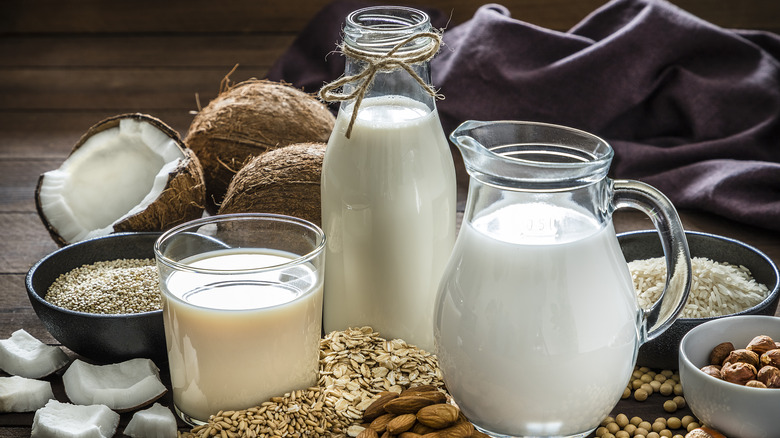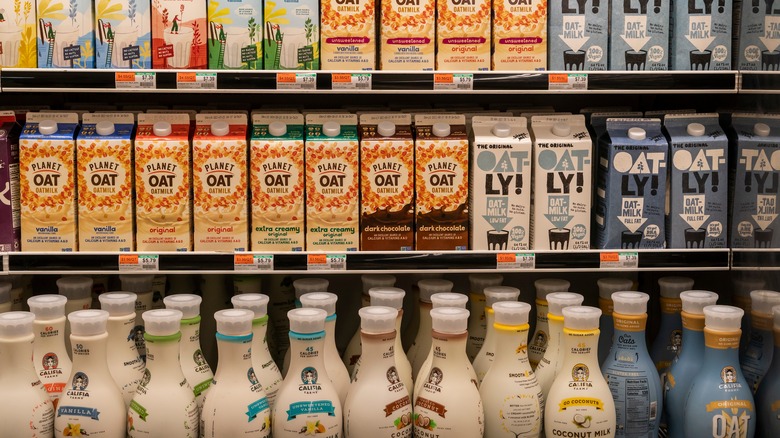What An Alternative Milk's 'Original' Label Tells You About Its Taste
While a label touting it's the original form of the alternative milk may lead you to believe it's the simplest variety available, it is often the one with the most additives and sugar. The "original" form is usually the one they were trying to make taste the most like cow's milk: luscious, creamy, and thick. Those additives and sugar give it the mouthfeel and subtle sweetness of whole milk.
Hence, that "original" label lets you know it's the best option for subbing in for dairy milk's traditional applications — a bowl of cereal, a glass with dinner, adding creaminess to a soup, or a custard concoction.
Whether you're looking at almond, soy, rice, cashew, coconut, or oat milk, they almost come in a handful of different varieties. The other labels you'll come across of that alternative milk, including unsweetened and flavored, are best for atypical milk uses. They're best when you want to add some additional depth to a dish or are looking to scale back on your sugar intake while remaining dairy-free.
When to substitute different labels of alternative milk
If you want to swap in alternative milk for cow's milk, taste and texture are important to consider. If the role of the dairy version is to thicken or add creaminess, an "original" labeled plant-based variety is a good option. It comes with the consistency and hint of sugar in milk.
If the role of the dairy in the recipe is more to impart flavor such as in a dessert, a plant-based milk might be the better option. A nut milk would add a lovely depth to a banana bread and a flavored vanilla alternative milk would up the ante of a smoothie or homemade cookies. However, if you add a splash of flavored almond milk to your vindaloo curry, you will most likely regret it.
Unsweetened alternative kinds of milk tend to be thinner, so that is something to keep in mind as well. You trade off having control over flavor and sugar content for texture and viscosity when veering away from dairy.

